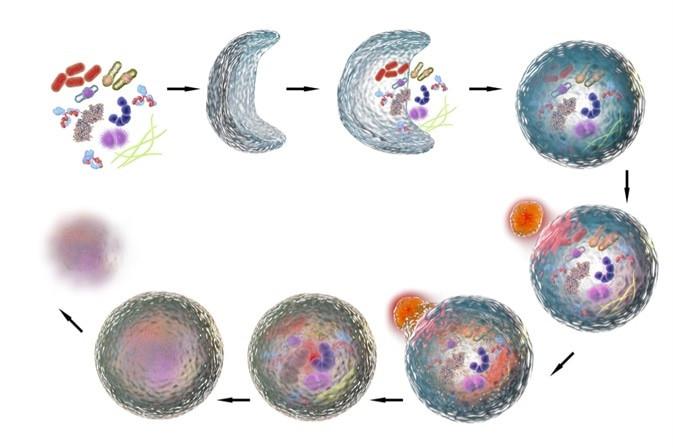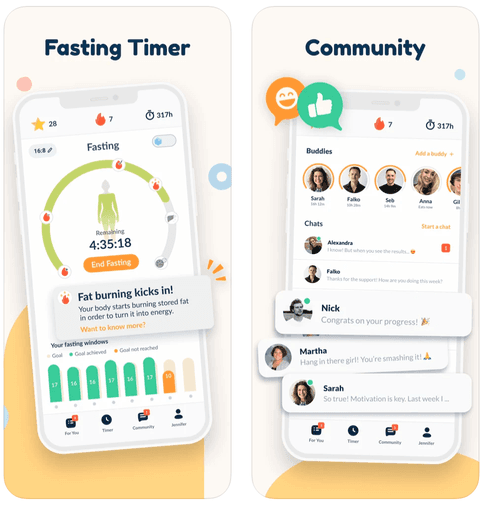Effects of Fasting & Time Restricted Eating on Fat Loss & Health | Episode 41
Curated from: Huberman Lab
103
Explore the World's Best Ideas
Join today and uncover 100+ curated journeys from 50+ topics. Unlock access to our mobile app with extensive features.
Time-Restricted Eating
Time-restricted eating or intermittent fasting means restricting one’s eating to a specific period during a 24-hours day – or going without food for a fixed number of days.
There is a biological difference between fasting and time-restricted feeding. Fasting and eating establish different biological conditions in the body, so time-restricted feeding is the term used to describe the overall plan of restricting one's eating window as it's called to a particular phase of each 24-hour day, or in some cases two specific days within the week.
227
3.35K reads
Low-Carb & Low-Fat Diets Produce Similar Outcomes For Weight Loss
If one's main goal is simply to lose weight, then it really does not matter what one eats provided that the number of calories burned is higher than the number of calories ingested.
A study from 2018 looked at weight loss in people following one particular diet versus another particular diet. The basic conclusion of the study was that there was no significant difference in weight change between people following a healthy, low-fat diet versus a healthy, low carbohydrate diet with significantly more dietary fats in them.
217
2.76K reads
The Biology Of Burning Calories
There are many factors that impact the calories burned part of the calories in, calories out equation.
- Some of those are obvious: the amount of exercise, type of exercise, basal metabolic rate, and how much energy one burns just sitting there.
- Metabolic factors and hormones are also essential. Hormones, such as thyroid hormone and insulin, and growth hormone; testosterone, and estrogen levels will also profoundly influence the calories out, the calories burned component of the calories in, calories out equation.
223
2.5K reads
Time Restricted Feeding Protocol
- It pays off in the metabolic sense and in the health sense and in the weight maintenance or loss sense to not ingest any food in the first hour after waking and potentially for longer.
- For the two and ideally three hours prior to bedtime, you also don't ingest any food or liquid calories for that matter.
It’s important that the feeding window take place during the most active parts of the day
274
2.5K reads
Autophagy
It's essentially cleaning up dead cells and cells that are injured or sick. And this is a natural process that occurs mainly during sleep. Fasting of any kind does tend to enhance autophagy.
Autophagic conditions can also be created simply by following a sub-caloric diet.
When we're asleep, the bad cells are getting gobbled up and eaten. And the good cells also are undergoing certain repair mechanisms mainly related to, or at least governed by the circadian genes.
247
2.31K reads
Effects of Specific Categories of Food
- There are a few factors that are going to govern how quickly you transition from ingesting food to a fasted state, as you ingest your last bite or sip of calories, that's not when the fast begins.
- Very large meals are going to take longer to digest than very small meals. So learning to gauge food volume is important.
- Foods that include some fats or a lot of fats will tend to slow gastric emptying time.
- Be aware of foods that lead to big steep rises in glucose like pure sugars.
- Fibrous foods will also create a more long-lasting sustained release of glucose.
228
2.19K reads
Almost Everybody Underestimates Their Feeding Window
People think that they are on an eight-hour feeding window or six-hour feeding window, but when their data are analyzed (from fasting apps), it almost is always the case that they're actually on a feeding window that's one or even two hours longer than they think.
It turns out that people cheat, but they don't cheat in any kind of obvious way. They might have, you know, a glass of wine after dinner, or they'll have a cup of tea and a little bite of a cookie.
206
2.03K reads
4-6 Hour Feeding Windows
Relatively short feeding windows of say four to six hours do produce a number of positive health effects. Things like increased insulin sensitivity, which we know is good, remember type two diabetes is a reduction in insulin sensitivity improvements in beta cell function and the pancreas decreased blood pressure, decreased oxidative stress decreases in things like evening appetite. So positive health effects and psychological facts in general.
However, they either produce no change in body weight, or they tend to produce even increases in body weight.
218
1.96K reads
The 8-Hour Feeding Window
This window seems to be very beneficial across almost all the parameters, like inflammation, weight, loss, fat loss, adherence, etc. Also, people's ability to stick to the diet seems quite good during the 8- hour feeding windows, but when people try and undergo very short feeding windows of four to six hours, it seems that they are overeating in that four to six hours, at least overeating with respect to their metabolic needs.
The 7-9 hour feeding window produces all of the major health benefits of time-restricted feeding as well as being pretty straightforward.
240
1.85K reads
Effects Of Time Restricted Eating On Hormones
- In endurance athletes, it leads to a significant decrease in free testosterone (not to the extent that it should be avoided).
- Studies in athletes have shown significant reductions in cortisol.
- Shortening the feeding window to less than 8 hours can increase stress hormones and pro-inflammatory hormones and decrease some sex hormones
- Effects on fertility: reducing food intake or food calories too much can have negative effects on the ovulation cycle in women and sperm count in men because signals in the brain are looking for good reproductive conditions without stress .
215
1.84K reads
Protein Consumption & Timing for Muscle
If your main interest is maintaining and, or building muscle, then it can be beneficial to ingest protein early in the day.
You would still want to obey the foundational rule of no: not eating any food for the first hour post waking or at least the first hour post.
229
1.8K reads
How to Shift Your Eating Window
You should allow yourself a transition period of anywhere from one week to 10 days in which you shift your feeding window by about an hour each day or so.
And then once you establish a feeding window that feels comfortable for you and that you think you can maintain over time and you simply maintain that feeding schedule for at least 30 days (but ideally you would do that indefinitely.)
210
1.6K reads
Blood Glucose & Feeding
- Blood glucose and insulin go up when you eat and down when you don’t eat (barring type 1 or 2 diabetes)
- What you eat has a differential impact on the rise in blood glucose (e.g., simple carbs and sugars will raise it the most, grains will raise it more than fibrous carbs like lettuce, etc.)
- High blood glucose is correlated with mortality
- Almost everyone has an increasing, resting blood glucose level as we age.
211
1.6K reads
Eating Every-Other-Day
It does seem that it can create significant weight loss and can help obese individuals because it can reduce resting blood glucose, and every other day fasting in many cases can produce more rapid effects on weight loss and reductions in blood glucose than time-restricted feeding.
However, every other day type of fasting for most people is not going to be feasible. They're just not going to be able to do that for a long period of time.
208
1.56K reads
Mental Focus And Clarity
One of the aspects of fasting that have drawn a lot of people to time-restricted feeding and fasting is the clarity of mind that people get.
- People don't have to think about when they're going to eat because they know when their eating window begins. They also don't have to think about regulating their behavior because they already know when they're going to eat and when they're not going to eat.
- When you're restricting portions, you actually have to make decisions all the time.
213
1.47K reads
What Breaks a Fast?
It's all contextual. It depends on when you ate how much you ate and where you are in your circadian cycle.
- Anything that involves sugar in particular, simple sugars can potentially break your fast.
- Drinking water, drinking tea, and coffee (provided it's black coffee) will not break your fast.
- Eating 1 peanut when deep in a fasted state will not break your fast, eating a whole handful of peanuts might not even break your fast if you are in a very low glucose state. If you just finished a meal that included carbohydrates, or it was a very large meal of any kind an hour ago, yes, indeed, eat
ing one peanut could break your fast.
222
1.62K reads
Artificial Sweeteners, Plant-Based Sweeteners
There are not a lot of good studies exploring plant-based non-sugar sweeteners, like Stevia.
Most people need to establish this for themselves. The best way would be to wear a continuous glucose monitor to go into a fasted state of either one hour or two hours, or maybe you've been fasting all night and then ingest Stevia in whatever form you want.
204
1.6K reads
IDEAS CURATED BY
Sylvia Wade's ideas are part of this journey:
Learn more about podcasts with this collection
Different types of fasting
How fasting can improve your overall health
How to prepare for a fast
Related collections
Similar ideas
Read & Learn
20x Faster
without
deepstash
with
deepstash
with
deepstash
Personalized microlearning
—
100+ Learning Journeys
—
Access to 200,000+ ideas
—
Access to the mobile app
—
Unlimited idea saving
—
—
Unlimited history
—
—
Unlimited listening to ideas
—
—
Downloading & offline access
—
—
Supercharge your mind with one idea per day
Enter your email and spend 1 minute every day to learn something new.
I agree to receive email updates









